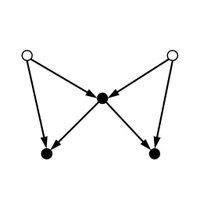
Yongnam Kim
@y2silence
Associate Professor, Dept. of Education, Seoul National University | Researcher in Causal Inference
ID: 21628250
23-02-2009 03:41:42
3,3K Tweet
783 Takipçi
586 Takip Edilen

Yongnam Kim I don't think it makes sense to think of grade causing gender or vice versa. Assuming there's a cohort effect, we can think of 'year born' as causing both grade and gender. In which case controlling for gender would block the non-causal path through 'year born' and 'gender'




Yongnam Kim However, note that "causal inference" is lumped together with "experiments". I'd be very interested in those numbers. Personally, I see more good reasons for being skeptical about experiments than causal inference (for which I see mainly bad reasons) in the Social Sciences.











